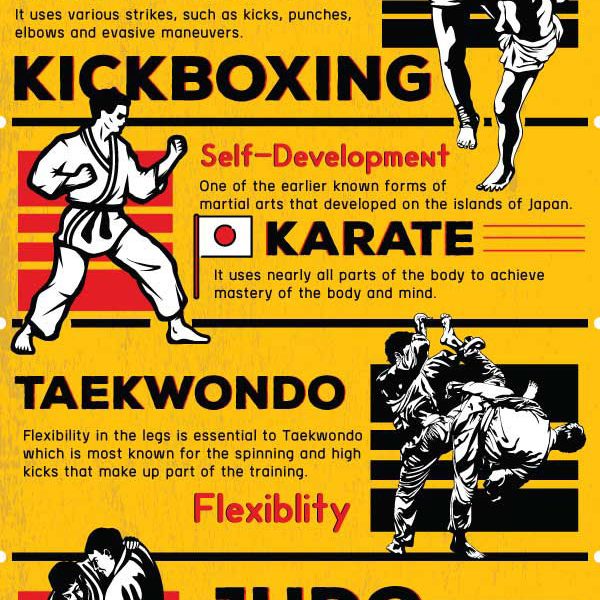Start A Fascinating Journey Right Into The Realm Of Martial Arts, Where The Fusion Of Olden Customs And Contemporary Efficiency Awaits
Start A Fascinating Journey Right Into The Realm Of Martial Arts, Where The Fusion Of Olden Customs And Contemporary Efficiency Awaits
Blog Article
Material Develop By-Gentry Martin
Step into the ancient world where martial arts were substantiated of necessity in varied regions. Societies crafted special fighting styles linked with historical contexts. Methods advanced over centuries with committed technique and cultural exchanges. Today, contemporary martial arts mix conventional aspects for optimal effectiveness. Philosophically, martial arts emphasize self-control, self-improvement, and consistency. Regard, humility, and balance are foundational concepts directing practitioners in the direction of growth and durability. Explore the midsts of this rich background and ideology to reveal the profound influences forming this enduring technique.
Origins of Fighting Style
Fighting style came from numerous regions worldwide, developing as sensible fight systems to resist threats. These old combating styles were created out of requirement, with each society crafting methods suited to their special atmospheres and obstacles. From the grappling arts of Jujutsu in Japan to the striking techniques of Martial art in China, martial arts were deeply intertwined with the historic, social, and cultural textile of their particular cultures.
In Japan, the samurai course refined martial arts like Kenjutsu, the art of the sword, which later evolved into the more promoted type of Kendo. On the other hand, in Brazil, Capoeira became a mix of dance and combat, developed by enslaved Africans as a method to withstand fascism. Each fighting style carries with it an abundant background and viewpoint, showing the worths and beliefs of the people that exercised them.
As you explore the beginnings of martial arts, you reveal a tapestry of human resourcefulness, resilience, and the stubborn spirit of warriors throughout time.
Evolution of Techniques
Through centuries of practice and improvement, battle strategies within numerous martial arts have undergone an extensive evolution. From ancient designs like Martial art and Martial arts to much more modern techniques such as Brazilian Jiu-Jitsu and Krav Maga, the advancement of strategies has actually been driven by a combination of social influences, functional applications, and technical advancements.
One significant element of this development is the cross-pollination of techniques between different martial arts. For example, techniques from traditional Japanese Jiu-Jitsu were incorporated into the production of Judo by Jigoro Kano in the late 19th century. This mixing of styles has caused the growth of crossbreed martial arts like Mixed Martial Arts (MIXED MARTIAL ARTS), which incorporate components of striking, grappling, and submission methods.
Additionally, the advancement of strategies has actually been formed by the boosting focus on effectiveness and efficiency in combat. Professionals have continuously sought to improve their techniques via extensive training, trial and error, and competitors, leading to the development of highly specialized and reliable battling designs. Generally, the evolution of techniques in martial arts reflects the vibrant nature of fight and the ongoing pursuit for renovation and innovation.
Philosophical Foundations
Discovering the underlying thoughtful concepts of martial arts supplies insight into their core values and guiding beliefs. At the heart of many martial arts disciplines is the principle of discipline itself. By educating your mind and body to serve as one natural system, you grow self-control that expands beyond the dojo or health club right into daily life. This self-control incorporates regard, humility, and self-control, forming not just your physical abilities but additionally your character.
An additional essential philosophical structure in martial arts is the idea of continuous self-improvement. The journey of mastering a fighting style is continuous, with specialists continuously aiming to better themselves, both physically and mentally. This concentrate on growth promotes strength, willpower, and a development way of thinking that can be put on all aspects of life.
Moreover, martial arts highlight the significance of consistency and balance. Techniques are made to make use of an opponent's power versus them, highlighting the principle of generating and redirecting pressure rather than fulfilling it head-on. This viewpoint includes social connections, promoting serene resolutions and mutual understanding. By accepting mouse click the next webpage , martial artists not just enhance their fight abilities but additionally grow a way of life centered on individual growth, regard, and consistency.
Conclusion
Finally, the history and viewpoint of martial arts supply a rich tapestry of practice, discipline, and self-improvement.
Consider martial arts programs for autism of Bruce Lee, that changed martial arts by mixing various styles and philosophies to develop his very own distinct form of Jeet Kune Do.
Through devotion and technology, martial artists continue to press boundaries and inspire others to reach their full capacity both in combat and in life.
